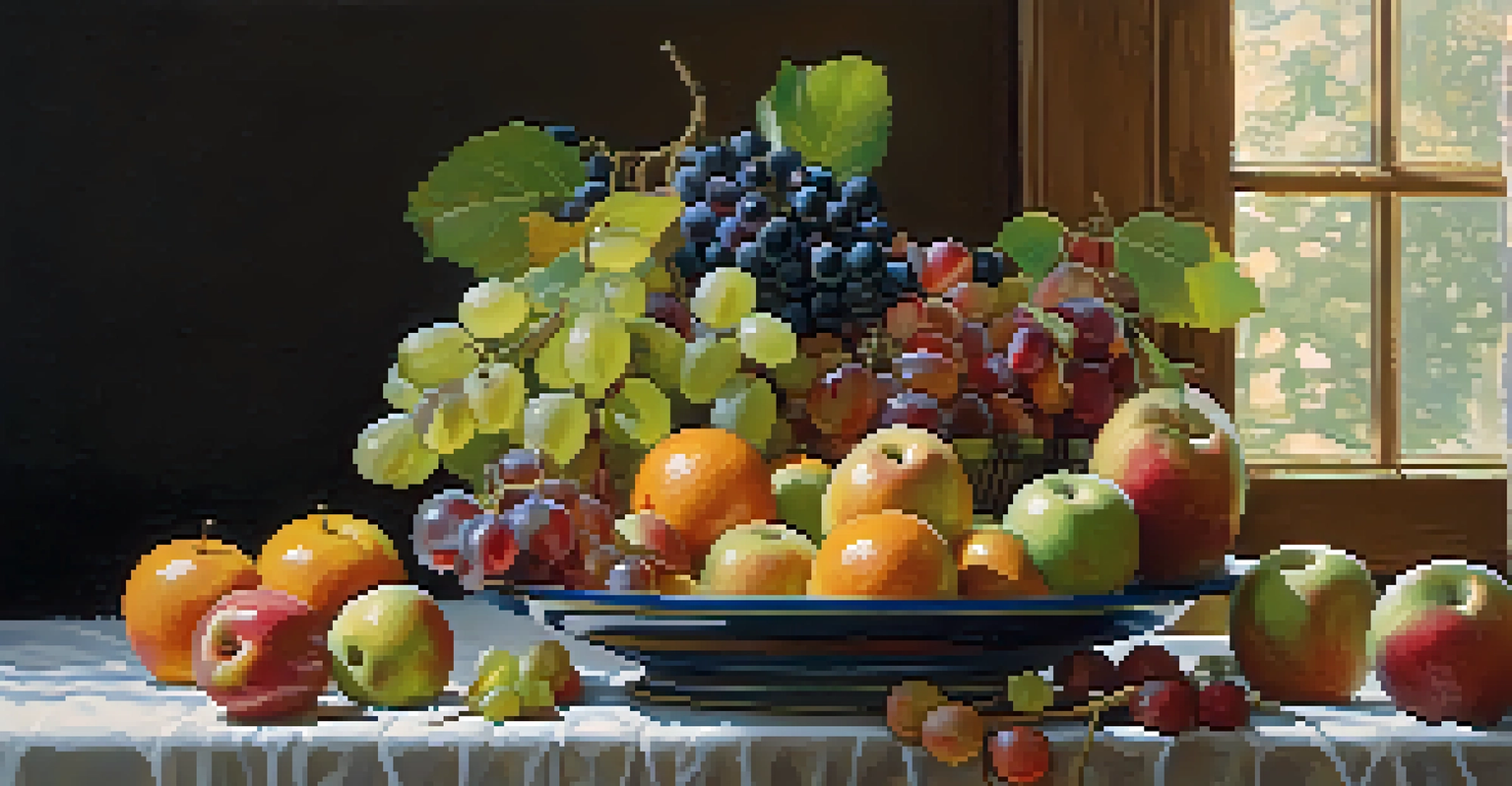The Elements of Art: Understanding Visual Language in Art

What Are the Elements of Art? A Simple Overview
The elements of art are the building blocks of any artwork. These fundamental components—line, shape, color, form, space, texture, and value—help artists communicate their ideas and emotions. Think of them as the grammar of visual language, allowing creators to construct meaning and evoke feelings in viewers.
Art is the most beautiful of all lies.
Understanding these elements can enhance your appreciation of art. For instance, when you notice how an artist uses color to set a mood or line to direct your gaze, you start to see the deeper intentions behind their work. This knowledge makes you not just a viewer but an engaged participant in the artistic conversation.
Related Resource
Whether you're an artist or an art lover, grasping these elements will sharpen your skills and deepen your insight. As we explore each element, you'll discover how they interact and contribute to the overall impact of a piece.
Line: The Pathway of Expression
Line is one of the most basic yet powerful elements of art. It can be straight, curved, thick, or thin, and it can express a wide range of emotions and ideas. For example, jagged lines might convey tension, while soft, flowing lines can suggest calmness, much like a gentle breeze.

Lines also guide the viewer's eye through a composition, creating movement and directing focus. Imagine walking through a forest where the trees line a path; your eyes naturally follow that path. In art, lines serve a similar purpose, leading you to the focal points the artist wants you to see.
Elements Define Artistic Expression
The elements of art—line, shape, color, form, space, texture, and value—serve as essential building blocks for artists to convey ideas and emotions.
Artists often play with line weight and direction to create depth and perspective. This manipulation can transform a simple drawing into a dynamic scene, pulling viewers into the narrative the artist wishes to tell.
Shape: The Foundation of Form
Shapes are two-dimensional forms created when lines enclose space. They can be geometric, like squares and circles, or organic, resembling the free forms found in nature. Think about how a triangular shape can suggest stability, while a circular shape evokes harmony and unity.
Every artist was first an amateur.
In art, shapes are used to create compositions and organize elements. They can also create contrast; for instance, a bold geometric shape can stand out against a backdrop of soft, flowing forms, drawing the viewer's eye. This distinction helps to convey the artist's message more effectively.
Related Resource
By understanding how shapes interact, you can appreciate the complexity within seemingly simple artworks. Every shape has a purpose, whether to create balance, tension, or visual interest, making them a vital component of visual language.
Color: The Emotional Palette of Art
Color is one of the most captivating elements of art, capable of evoking strong emotions and setting the mood of a piece. Artists can use warm colors like reds and oranges to create feelings of energy and passion, while cool colors like blues and greens often evoke calm and tranquility. This emotional spectrum makes color a powerful tool in storytelling.
The relationships between colors—such as complementary or analogous schemes—can also enhance the visual experience. For example, pairing complementary colors can create vibrant contrast, while analogous colors can produce harmony and subtlety in a piece. This understanding can transform how you perceive and interpret artworks.
Color Evokes Strong Emotions
Artists use color not only to set the mood but also to create emotional connections through warm and cool palettes.
Moreover, color theory provides a framework for artists to choose their palettes wisely. By learning about color mixing and the effects of light, artists can create depth, movement, and mood, drawing viewers into their world.
Form: The Three-Dimensional Experience
Form refers to the three-dimensional quality of an object, encompassing volume and mass. While shape is flat, form gives depth and realism, allowing viewers to experience art in a more lifelike way. Think of a sculpture; its form provides a tactile quality that invites you to explore it from different angles.
Artists can create the illusion of form in two-dimensional works through techniques like shading and perspective. By manipulating light and shadow, they can make a flat painting appear more three-dimensional, much like an optical illusion that tricks your eye.
Related Resource
Understanding form is essential for both artists and appreciators. Recognizing how artists use these techniques can deepen your connection to the artwork and enhance your own creative endeavors.
Space: The Art of Arrangement
Space in art refers to the area around, between, and within objects. It's essential for creating composition and balance in a piece. Artists use positive space (the subject) and negative space (the background) to guide the viewer's experience, much like how a well-arranged room feels inviting.
The use of space can also convey depth and perspective. For instance, overlapping shapes can suggest distance, while varying sizes of elements can create a sense of scale. Understanding how artists manipulate space helps viewers appreciate the intentionality behind every placement.
Understanding Space Enhances Art
Recognizing how artists manipulate space can deepen appreciation for composition and the intentionality behind each artwork.
By recognizing the importance of space, you can enhance your understanding of an artwork's composition. This newfound awareness allows you to engage with art on a more profound level, appreciating the delicate interplay between elements.
Texture: The Sensory Dimension of Art
Texture refers to the surface quality of an artwork, whether it feels smooth, rough, soft, or hard. In visual art, texture can be created through techniques like brushstrokes or collage, allowing viewers to engage multiple senses. Imagine the difference between a painting that looks velvety and one that appears coarse; your experience of each would be vastly different.
Texture can also add depth and interest to a work. Artists often use texture to enhance the emotional impact of their pieces, drawing viewers into the physicality of the artwork. This sensory appeal can create a more immersive and compelling experience.

Understanding texture enriches your appreciation of art. It invites you to explore works beyond their visual components, engaging your sense of touch through imagination and enhancing the overall meaning of the piece.
Value: The Key to Light and Shadow
Value refers to the lightness or darkness of a color, crucial for creating contrast and depth in art. By manipulating value, artists can create highlights and shadows, giving their work a sense of three-dimensionality. Think of how a bright light can cast dark shadows, shaping the way we perceive objects in real life.
Incorporating value effectively can lead to dramatic effects in a piece. For instance, strong contrasts can evoke tension, while gradual value shifts can produce a softer, more serene feel. This interplay between light and dark is essential for guiding emotions and focus within an artwork.
Understanding value not only enhances your appreciation of art but also equips you with skills to create your own works. By mastering this element, you can add depth and dimension to your pieces, making them more impactful and resonant.